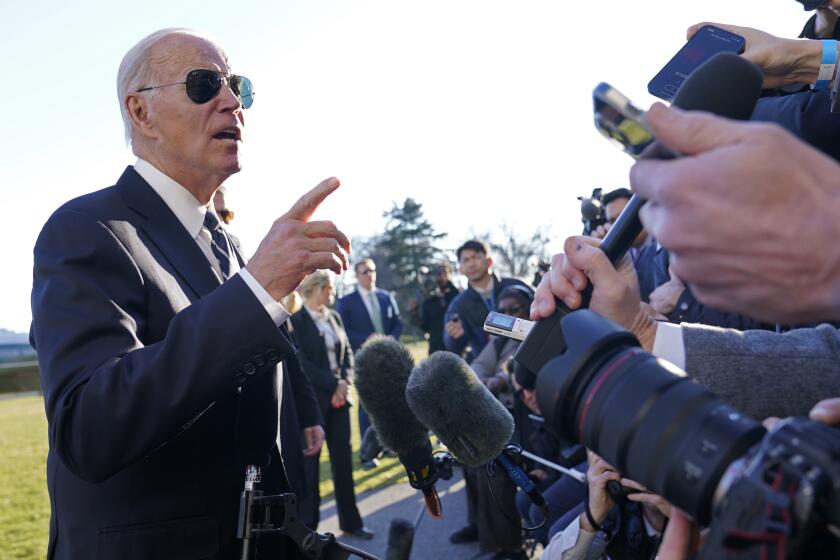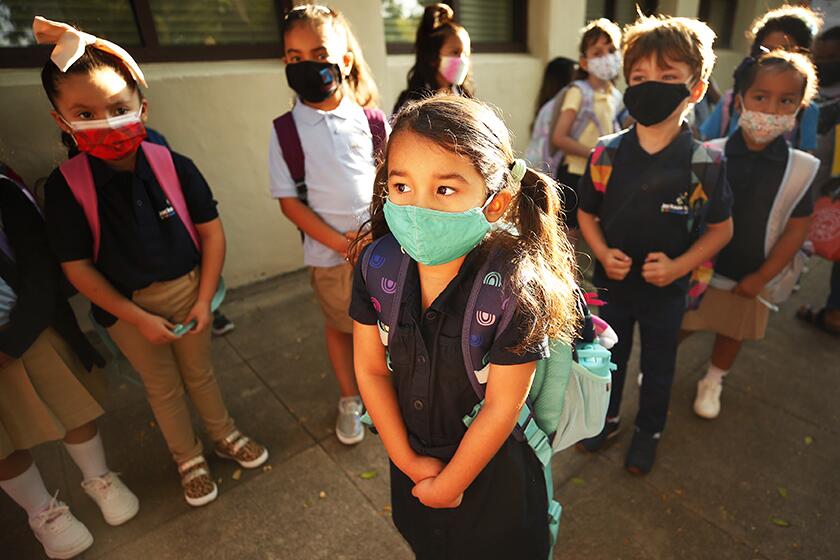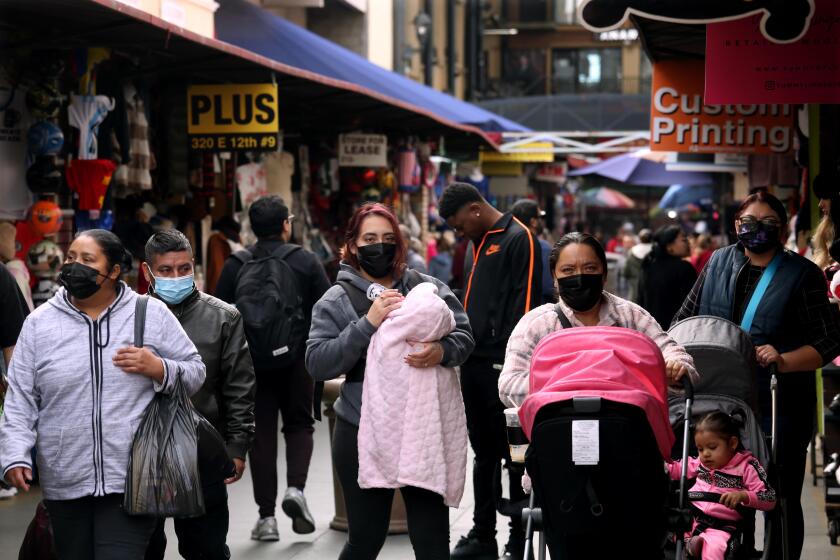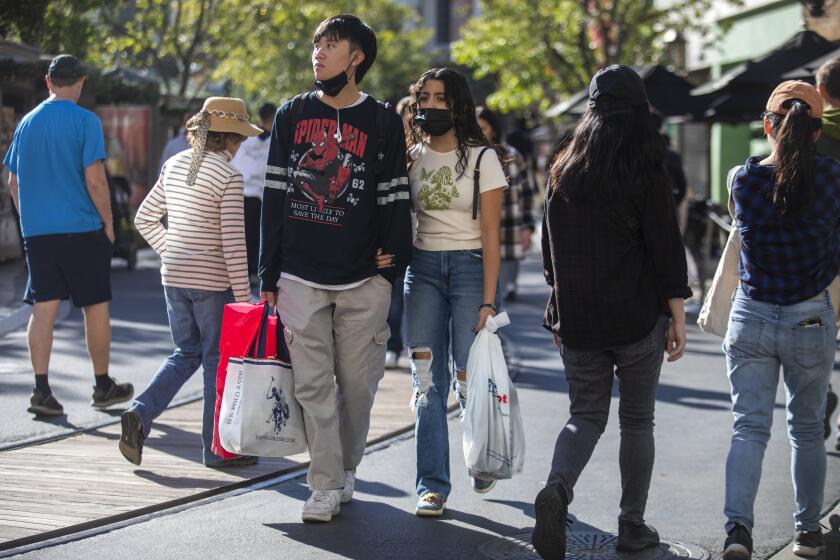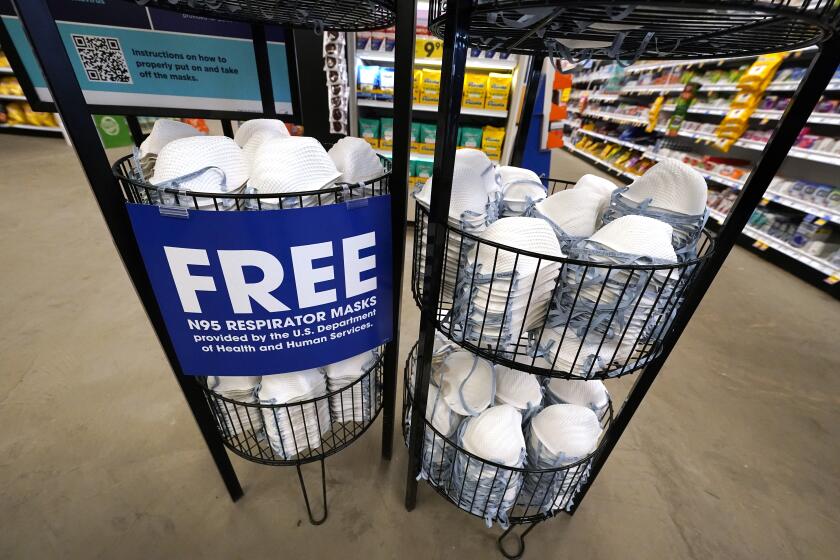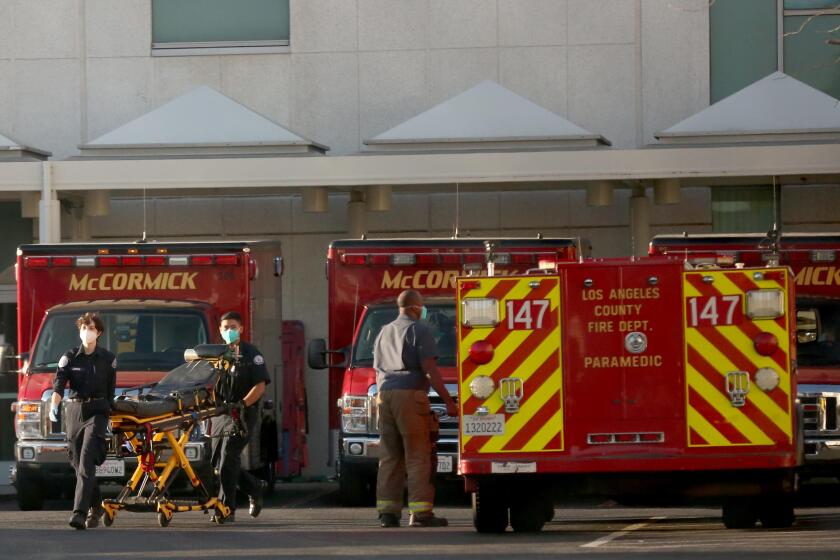COVID emergency declarations are ending. What does that mean for California?
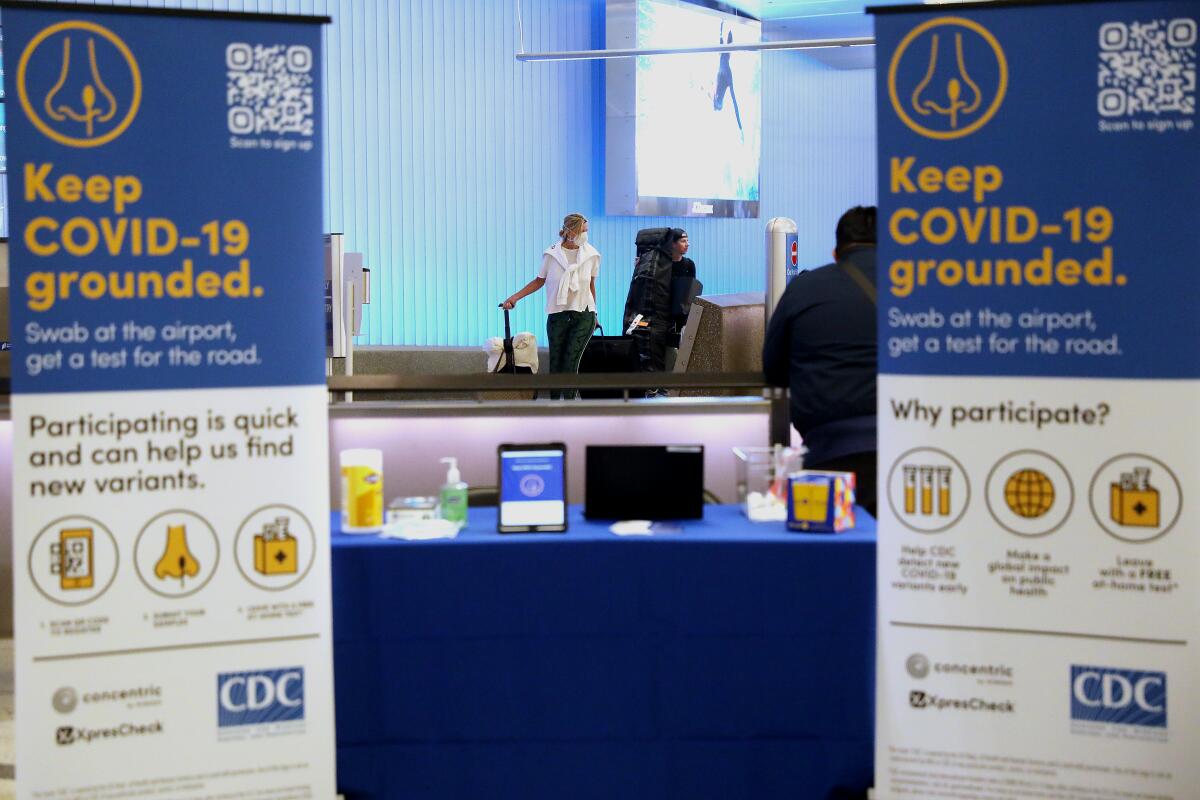
- Share via
Three years following the emergence of COVID-19, authorities at state and federal levels are preparing to lift emergency declarations originally issued to marshal pandemic responses.
While the moves will undoubtedly be cheered in some circles, such steps aren’t merely symbolic. Transitioning out of the emergency phase could eventually spell the end of universal access to free vaccines, treatments and tests.
But plans to rescind the emergency declarations also illustrate a turning in the years-long global battle against COVID-19.
“My sincere hope is that we’re entering a new phase with less devastation, less severe illness and, particularly, with less death,” Los Angeles County Public Health Director Barbara Ferrer said Thursday.
Here’s what you need to know:
President Biden has informed Congress that he will end the twin national emergencies for addressing COVID-19 on May 11, as most of the world has returned closer to normality.
When will the emergency declarations end?
Gov. Gavin Newsom has announced the COVID-19 state of emergency in California will end Feb. 28.
“With the operational preparedness that we’ve built up and the measures that we’ll continue to employ moving forward, California is ready to phase out this tool,” he said in a previous statement.
And President Biden informed Congress this week that he will end the COVID-19 national emergency and public health emergency declarations on May 11.
That timeline is reasonable from a public health perspective, according to White House COVID-19 response coordinator Dr. Ashish Jha.
“We’re not completely through the winter, but we wanted to make sure we didn’t have a crushing surge, where hospitals were setting up beds in the parking lots,” Jha said during a discussion Thursday with Dr. Robert Wachter, chair of UC San Francisco’s Department of Medicine.
Although the coronavirus subvariant XBB.1.5 is still rising in some places, and there might be a bump in cases moving forward, Jha said “we felt pretty confident over the last couple of weeks that we had probably been through the worst.”
But, he added, “Let’s be very clear: COVID is still a major burden for public health in America,” so “ending the emergency is not the same thing as saying it is no longer a problem.” Nationally, 48,000 COVID-19 deaths have been reported since October, nearly triple the estimated 17,000 flu deaths over the same time.
In the city of Los Angeles, the local COVID-19 emergency declaration ended Wednesday. But the one for Los Angeles County remains in place, Ferrer said. It’s the basis for the existence of the county’s pandemic eviction moratorium, which covers all unincorporated areas and cities that do not have their own moratoriums in place.
“We’re not lobbying to extend the emergencies. What we are doing is taking a hard look at what protections are offered by the emergency declarations and, if things go away, what would be put in place to mitigate any unanticipated or unintended consequences,” Ferrer said.
COVID-19 remains a global health emergency, but the pandemic may be nearing an inflection point amid higher levels of immunity, the WHO says.
Why not cancel the orders immediately?
Lifting the federal declarations right away would be hugely disruptive to healthcare systems that have altered their operations to be more tailored to the needs of the pandemic era, according to Jha.
“We’re basically giving everybody a little bit over 90 days, and that should be plenty of time for health systems to kind of go back to a more normal way of functioning,” he said.
California’s timeline was unveiled in October but is contingent on the state’s success in navigating a potential winter coronavirus wave.
Though the state did see transmission and hospitalizations rise in the weeks following Thanksgiving, both metrics have since declined substantially. And barring a late-season resurgence, this winter will be the first that the state hasn’t been racked by a devastating surge.
California’s COVID-19 metrics have continued to improve since a late fall uptick in coronavirus cases and hospitalizations.
What does the end mean?
The state of emergency allowed Newsom’s administration to waive certain state regulations and statutes and redirect funds in response to the public health crisis. Officials have said such flexibility was vital in the state’s COVID-19 response, though Republicans have criticized keeping the declaration in place for so long, calling it an unnecessary abuse of executive power.
California’s emergency declaration — issued March 4, 2020 — served as a prelude to more than 70 executive orders, including those aimed at scaling up testing and vaccinations, pausing evictions and expanding the scope of practice for healthcare workers. Newsom has since terminated many of those orders.
Almost a year ago, state officials unveiled what they refer to as the SMARTER plan, which focuses on preparedness anchored around seven key areas: shots, masks, awareness, readiness, testing, education and Rx (or anti-COVID drugs).
This plan “will ensure a level of operational preparedness to support communities and appropriately respond to future outbreaks,” the California Department of Public Health told The Times this week.
Newsom’s office previously called for legislation to allow lab workers “to solely process COVID-19 tests” and “nurses to dispense COVID-19 therapeutics” once the state of emergency ends. Assemblyman Marc Berman (D-Menlo Park) introduced legislation on the topic in January.
“The Newsom administration looks forward to working with the Legislature on this measure to maintain California’s COVID-19 operational preparedness,” the governor’s office said.
In L.A., ending the declaration of local emergency means that “the city’s emergency operations center has deactivated for COVID-19,” according to a statement Thursday from the Emergency Management Department.
The department “will continue in partnership with the L.A. County Public Health Department to ensure information sharing and to promote the importance of following COVID safety guidelines,” the statement continued. “Should conditions related to COVID worsen to the degree where higher-level coordination and support is needed, the EOC can activate again.”
L.A. County’s hard-won progress was attributed both to community immunity and tools that have blunted some of the coronavirus’ worst effects.
What about vaccines and treatments?
In a Twitter thread earlier this week, Jha emphasized that ending the public health emergency doesn’t mean “people will suddenly not be able to get the vaccines and treatments they need.”
“On May 12, you can still walk into a pharmacy and get your bivalent vaccine for free,” he wrote Wednesday. “On May 12, if you get COVID, you can still get your Paxlovid [anti-COVID pills] for free. None of that changes.”
Eventually, “we will transition from U.S. government-distributed vaccines and treatments to those purchased through the regular healthcare system, the way we do for every other vaccine and treatment,” Jha said. But in the long-run, COVID-19 vaccines for insured people will remain free, which is a requirement of the Affordable Care Act.
Even after the state and federal emergencies end, “Californians will continue to be able to access COVID-19 vaccines, testing and therapeutics with no out-of-pocket costs,” according to the state Health and Human Services Agency.
Until Nov. 11, Californians with private health insurance or who are enrolled in Medi-Cal “can access COVID-19 vaccines, testing and therapeutics from any appropriately licensed provider without any out-of-pocket costs, even if the provider is outside the enrollee’s health plan network,” the agency wrote in a statement to The Times on Thursday.
After that date, residents may be subject to cost-sharing or coinsurance amounts if they access such resources from an out-of-network provider. “However, if the enrollee accesses the services from an in-network provider, the enrollee will not have to pay anything out-of-pocket,” according to the agency.
If the U.S. public health emergency ends, Americans would be vulnerable to a new coronavirus variant that sparks another COVID-19 surge.
What about tests?
U.S. households became eligible again this winter for four free at-home coronavirus tests. The federal government also ordered health insurers to reimburse customers for the cost of eight at-home coronavirus tests per month — of up to $12 per test — per covered individual. But the government’s order to insurers to reimburse people for the at-home tests may go away once the federal health emergency expires.
Insured people also have not had to pay for lab-based coronavirus tests, and the order to keep those costs free also may go away too.
In light of decreasing COVID-19 activity, California already plans “to phase out underutilized state-run COVID-19 testing and treatment sites in the coming weeks,” according to the state Department of Public Health.
“These sites were an important part of the state’s COVID-19 testing strategy and response,” the department said in a statement. “A final plan for demobilizing the remaining sites is being prepared.”
Unvaccinated people were more than seven times as likely to die from COVID-19 in Los Angeles County as those who received an updated booster during the latest coronavirus spike.
The agency is sending additional over-the-counter kits to local health departments that will be affected by the closure of testing sites.
Santa Clara County officials announced plans to demobilize their mass testing and vaccination sites by the end of the month.
“We are transitioning from a full-blown response where we have a sense of urgency every day to one where we are adapting to living with COVID,” Dr. Sara Cody, the county’s public health director and health officer, said during a news conference Wednesday.
She added, though, that she wants “to be very clear: The pandemic is not over. We can’t declare a day when it’s over and, as we’ve seen, it’s having a very, very long tail. We don’t know when it’s going to be over.”
“The states of emergencies, a lot of that is about how to do things faster, how to free up funds faster, but it doesn’t have to do with what the virus is doing because it’s still circulating,” she said.
L.A. County, on the other hand, has no immediate plans to close its county-run vaccination sites, and testing sites will remain available based on demand, Ferrer said.
“I don’t anticipate an immediate impact on access to vaccinations, testing or therapeutics in L.A. County in the very near future,” she said. “But as I’ve noted, there are some big changes in here about the financing, and we have to work that out.”
Times staff writer Taryn Luna contributed to this report.
More to Read
Sign up for Essential California
The most important California stories and recommendations in your inbox every morning.
You may occasionally receive promotional content from the Los Angeles Times.
